After about 45 minutes on the train from Victoria I arrived at my destination. I was a bit worried that it would be out of the way, hidden in a housing estate, but my google map wasn't necessary in the end as the directions were very well sign posted (its the National Trust we're dealing with here!) once you walk out of the station.
The house is owned by the National Trust, and is in a constant state of conservation. While I was there, they were still working on unearthing original wallpaper and murals.
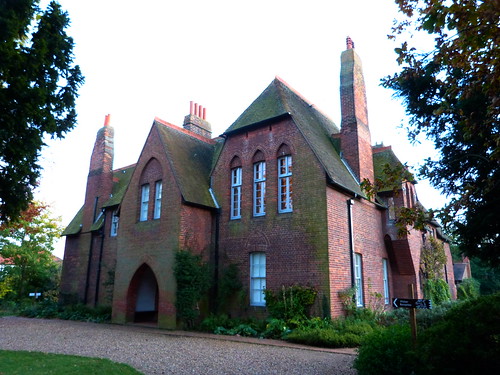

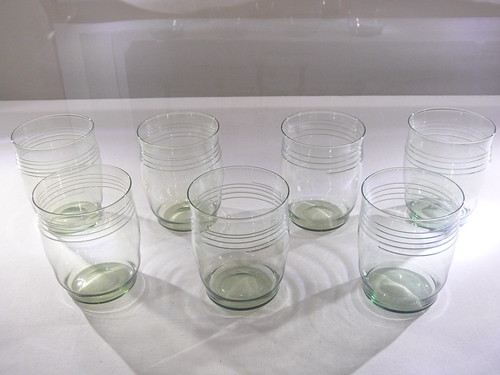
Philip Webb water glasses, designed for use at Red House. A recent acquisition, these were found by an eagle eyed individual on eBay!
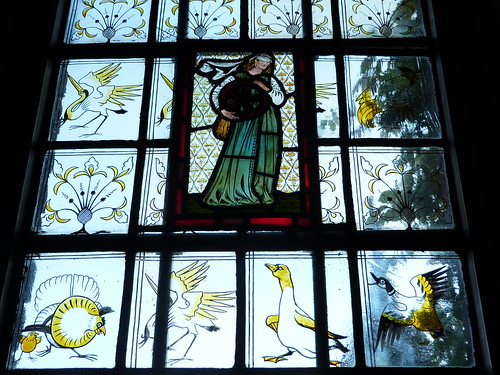
Panel by Edward Burne-Jones, originally placed in the front door of Red House, the painted glass surrounding it is by William Morris.
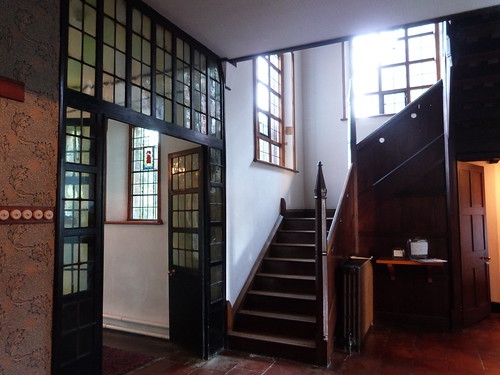
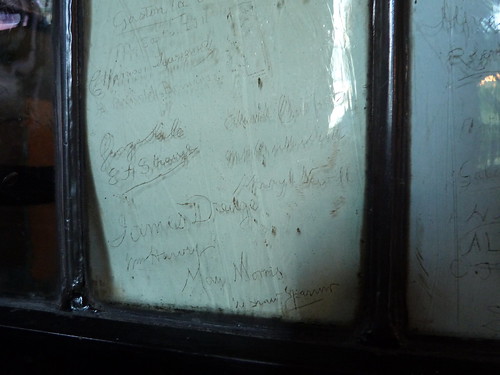
One of my favourite features of the house was in the garden hallway, the owner of the house in the 1890s had used the glass panels of the door as a visitors book, for guests to etch their name into the glass. The names of Arthur Lasenby Liberty, May Morris and Georgiana Burne-Jones can be made out (only May's is visible on this panel on the bottom, it was too dark and my pictures didn't turn out well)! There's something about a persons handwriting that makes a figure from history seem more authentic somehow.
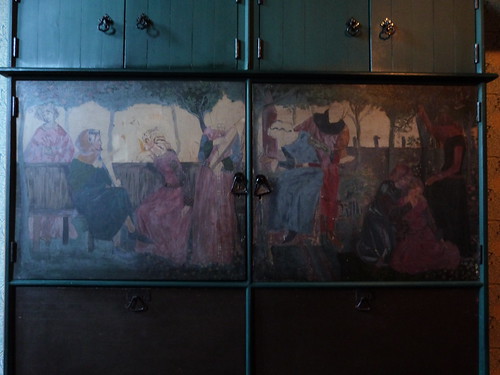
Morris fancied himself the Medieval Lord of his Manor. He would have a large oak table erected in the hall here, when he had guests to dinner. This (unfinished) settle in the hallway was painted by Morris and the Burne-Jones. The left hand panel is painted rather amateurishly by Morris, focusing mostly on decoration and embelishment, the panel to the right was painted by the Burne-Joneses. A quirky detail is of the woman on the far left of the left hand panel, it is a depiction of the Morris family's housekeeper, at Red Lion square!
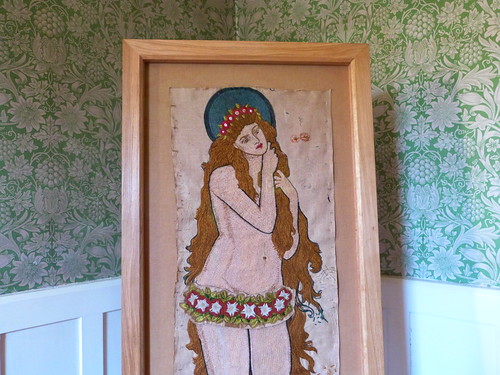
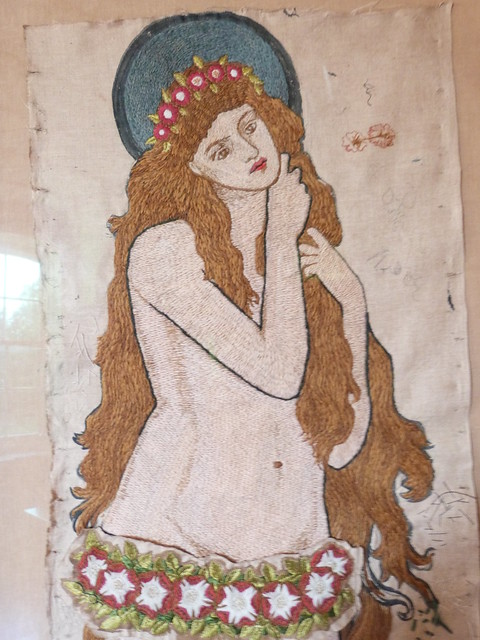
This is one of 7 surviving embroideries from a scheme of 12 envisioned for the dining room at Red House. This panel depicts Aphrodite, and turned up in an auction in Edinburgh in 2007. Out of the remaining six, 3 can be found at Kelmscott Manor, and 3 at Castle Howard (the only ones with embroidered backgrounds). I had the privlege of seeing the Castle Howard ones on my visit there in early 2011, and they are currently on display as part of the Tate's Pre-Raphaelite exhibition.
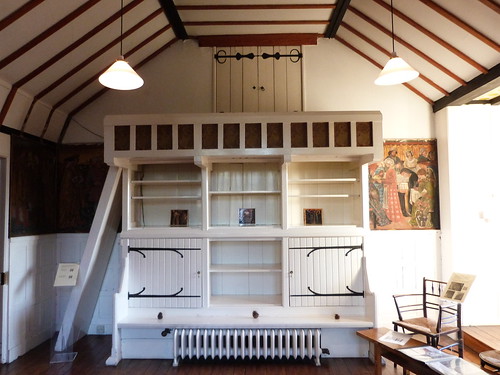
The drawing room, with settle designed by Morris. This room had an elaborate decorative scheme with the wall painted in murals by Jane and William Morris. This, and the settle was painted over with white emulsion paint in the 1950s and is slowly being uncovered by conservators.
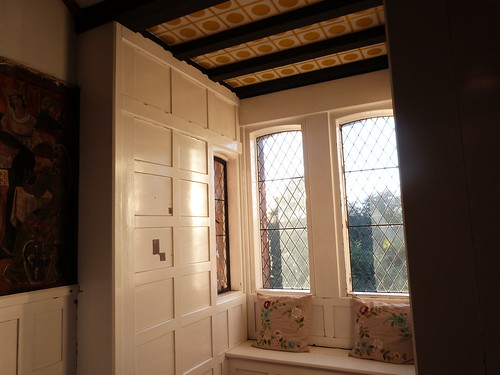
This 'Minstrels Gallery' was added by Webb in 1859 and probably made for a romantic nook for visiting guests!
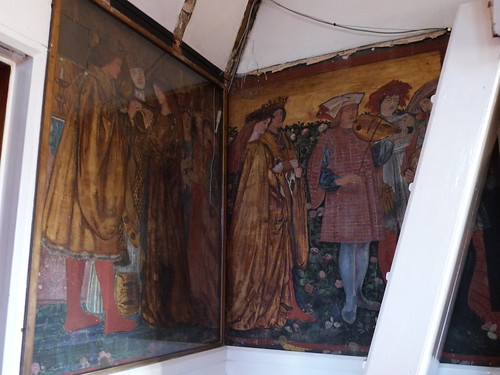
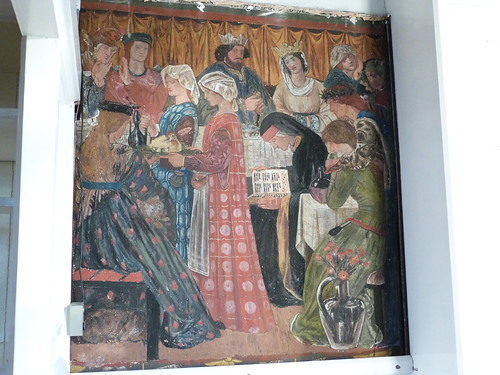
The walls on either side of the settle are painted by Edward and Georgina Burne-Jones as their wedding present to the Morris couple. They depict The Wedding Tale of Sir Degrevant.
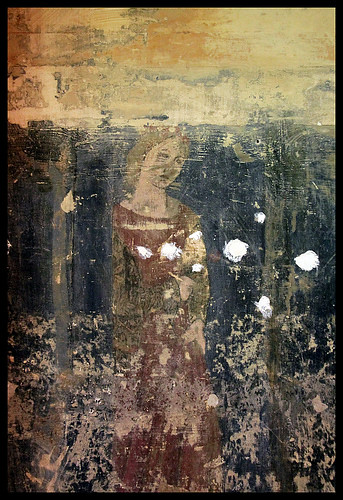
(Photo source)
Recently, a mural believed to be painted by Elizabeth Siddal as she recuperated at the house shortly before her death, was uncovered hidden behind a wardrobe. This is a fragment of the mural scheme, it is currently being restored, as you can see its in quite a bad state of deterioration. This was painted in William and Jane's bedroom, where a sunflower scheme is being uncovered on the ceiling and walls.

This pattern "Kelmscott Tree" found on the Morris Bed at Kelmscott Manor, currently at the Tate Britain Pre-Raphaelite exhibition. The bed pelmet, in this pattern, was designed by May Morris, and embroidered by Lily Yeats and Ellen Wright (1891-3).

These blocks would have been used by Morris & Co. to screenprint their patterns onto paper, some of the more intricate patterns would have required many of these, resulting in a more costly design.
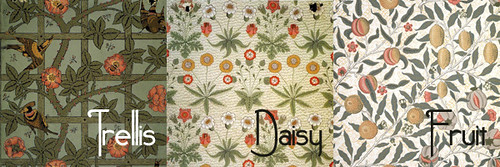
While in Red House, Morris designed his first three patterns for Morris & Co.; Trellis, Daisy and Fruit (Pomegranate). These were inspired by the flora and fauna surrounding Red House.

These famous round windows feature in the upstairs hallway. The glass is handpainted by Morris in a medieval pattern featuring his motto Si Je Puis ("If I Can").
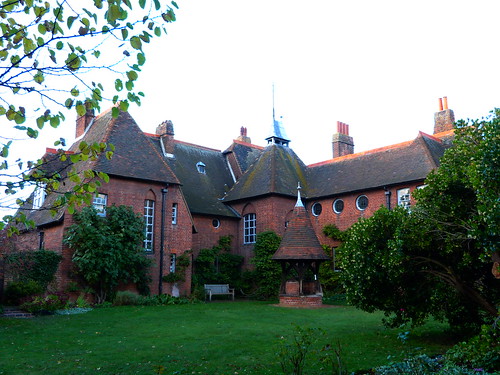
The view of the back of the house.
In 1865, due to financial and work commitments, Morris had to sacrifice his house of dreams.

May Morris would only have been a child when they left in 1865, this photograph may well have been taken in the interior of Red House.

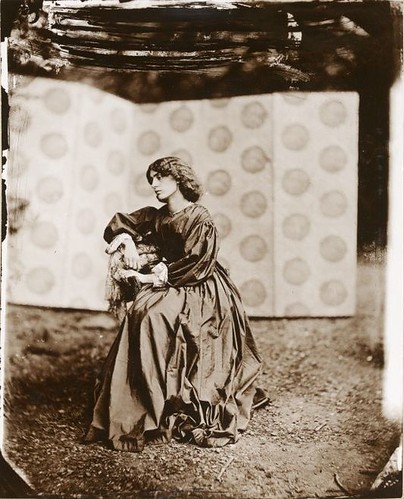
These photos, were taken in 1865, the year the Morris family moved out of Red House. Taken by Robert Parsons and styled by Rossetti (they were taken in his garden) they were to inspire the Pre-Raphaelite inclination in art as well as photography.
-
It seems hard to imagine now, that this once was positively rural, and now its just another suburb of London. All these estates have popped up around Red House, which still has the luxury of its garden. The houses all vary in age and style. I noticed that some of the earliest houses dated from 1876, when Morris' house was completed in 1860, 16 years before these houses were erected. Possibly the closest houses at the time?
As always you can click on the photos to enlarge them.
**Also this is a great video, featuring reknowned Pre-Raphaelite academic Jan Marsh, talking about Red House.
You can get the train from Charing Cross or Victoria station to Bexleyheath. Admission is £8 for adults, there is no student rate. The house is decorated for the Christmas!

This is amazing. What a beautiful place and I love all the detail you have put into the blogpost it's so interesting. It's really ace that you could take photographs, I went to Kelmscott Manor and no images were allowed inside the house. :(
ReplyDeleteAbsolutely love this post, Zoe! William Morris is someone whom I know very little about, so this blog was extra informative for me. Reminds me of Keats for some reason, all the artwork and moods inspired from it. So wonderful to think such finery existed back in the 1800s.
ReplyDelete